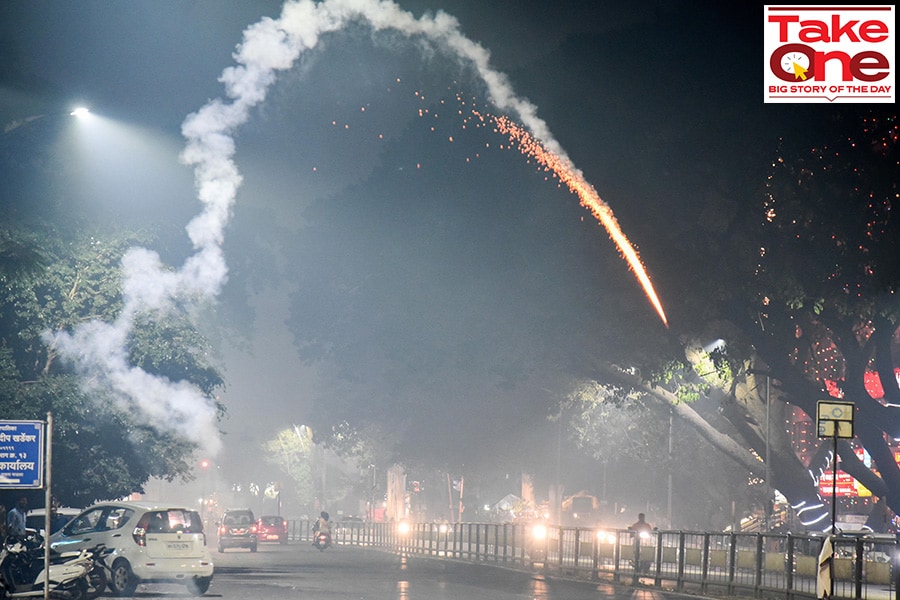
Firecrackers: The pollution we consciously choose
Despite interventions by courts, the rampant use of toxic firecrackers is encouraged by influential people and overlooked by policy measures and enforcement authorities
 ‘Green-crackers’, supposedly reduced-emission firecrackers promoted by the government as safe, are often banned firecrackers in disguise
‘Green-crackers’, supposedly reduced-emission firecrackers promoted by the government as safe, are often banned firecrackers in disguise
Image: Sanket Wankhade/Hindustan Times via Getty Images
At Marine Drive, Mumbai, I measured decibel levels some years ago. A father laughed as he handed his nearly eight-year-old son an exploding cracker ‘bomb’. The child bent over. When it exploded quicker than he expected and black burns marked his face, I watched his mother hug him. I wondered, not for the first time, why people give crackers to children.
I wondered why people light crackers at all. But really, I knew: Crackers with names like ‘Atom Bomb’, ‘Thunder Bomb’ and ‘Saddam Bomb’ declare their own powerful symbolism. Firecrackers are the emissions we choose.
Firecrackers add to the soupy air of Indian cities, the noisiest and most polluted in the world: A toxic mix of emissions from traffic, construction, garbage burning, industry and other ‘uncontrollable’ sources. Cracker use is encouraged by influential people and often overlooked by policy measures and enforcement authorities.
‘Green-crackers’, supposedly reduced-emission firecrackers promoted by the government as safe, are often banned firecrackers in disguise. Still, they are permitted in some states for 35 minutes, from 11.55 pm to 12.30 am to mark the New Year 2022.







